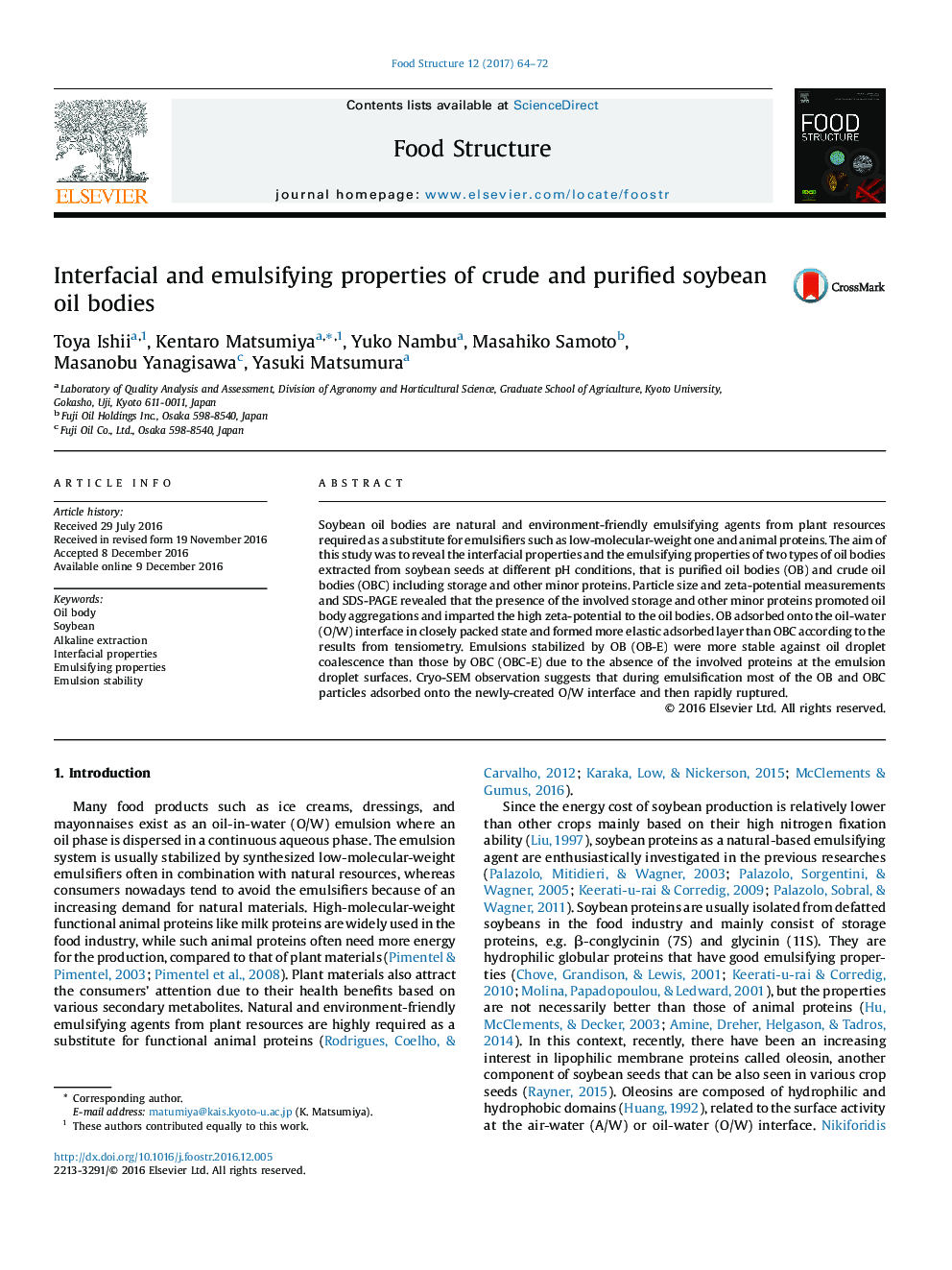| Article ID | Journal | Published Year | Pages | File Type |
|---|---|---|---|---|
| 6451802 | Food Structure | 2017 | 9 Pages |
â¢Crude and purified soybean oil bodies were prepared via the aqueous extraction.â¢The extraction is based on simple pH adjustment and centrifugation.â¢The oil bodies were used as an emulsifying agent.â¢Purified oil body formed more elastic film at the O/W interface than crude ones.â¢Purification of oil body improved emulsion stability against droplet coalescence.
Soybean oil bodies are natural and environment-friendly emulsifying agents from plant resources required as a substitute for emulsifiers such as low-molecular-weight one and animal proteins. The aim of this study was to reveal the interfacial properties and the emulsifying properties of two types of oil bodies extracted from soybean seeds at different pH conditions, that is purified oil bodies (OB) and crude oil bodies (OBC) including storage and other minor proteins. Particle size and zeta-potential measurements and SDS-PAGE revealed that the presence of the involved storage and other minor proteins promoted oil body aggregations and imparted the high zeta-potential to the oil bodies. OB adsorbed onto the oil-water (O/W) interface in closely packed state and formed more elastic adsorbed layer than OBC according to the results from tensiometry. Emulsions stabilized by OB (OB-E) were more stable against oil droplet coalescence than those by OBC (OBC-E) due to the absence of the involved proteins at the emulsion droplet surfaces. Cryo-SEM observation suggests that during emulsification most of the OB and OBC particles adsorbed onto the newly-created O/W interface and then rapidly ruptured.
Graphical abstractDownload high-res image (176KB)Download full-size image
